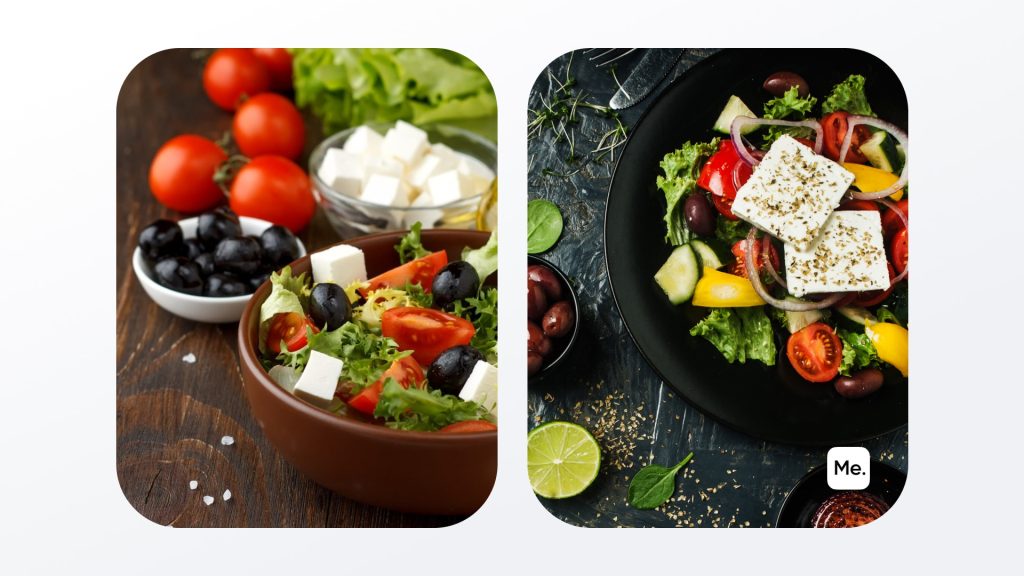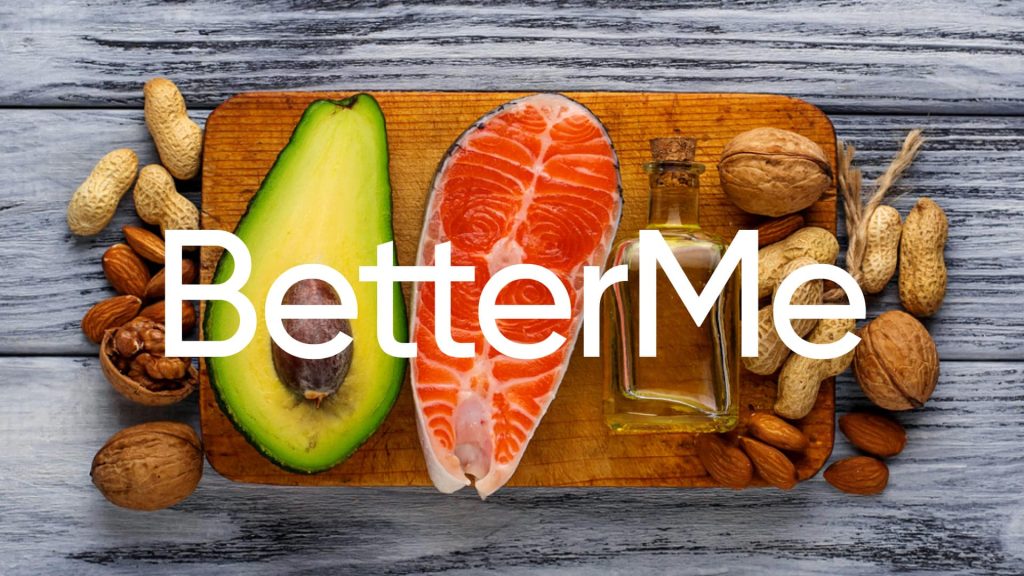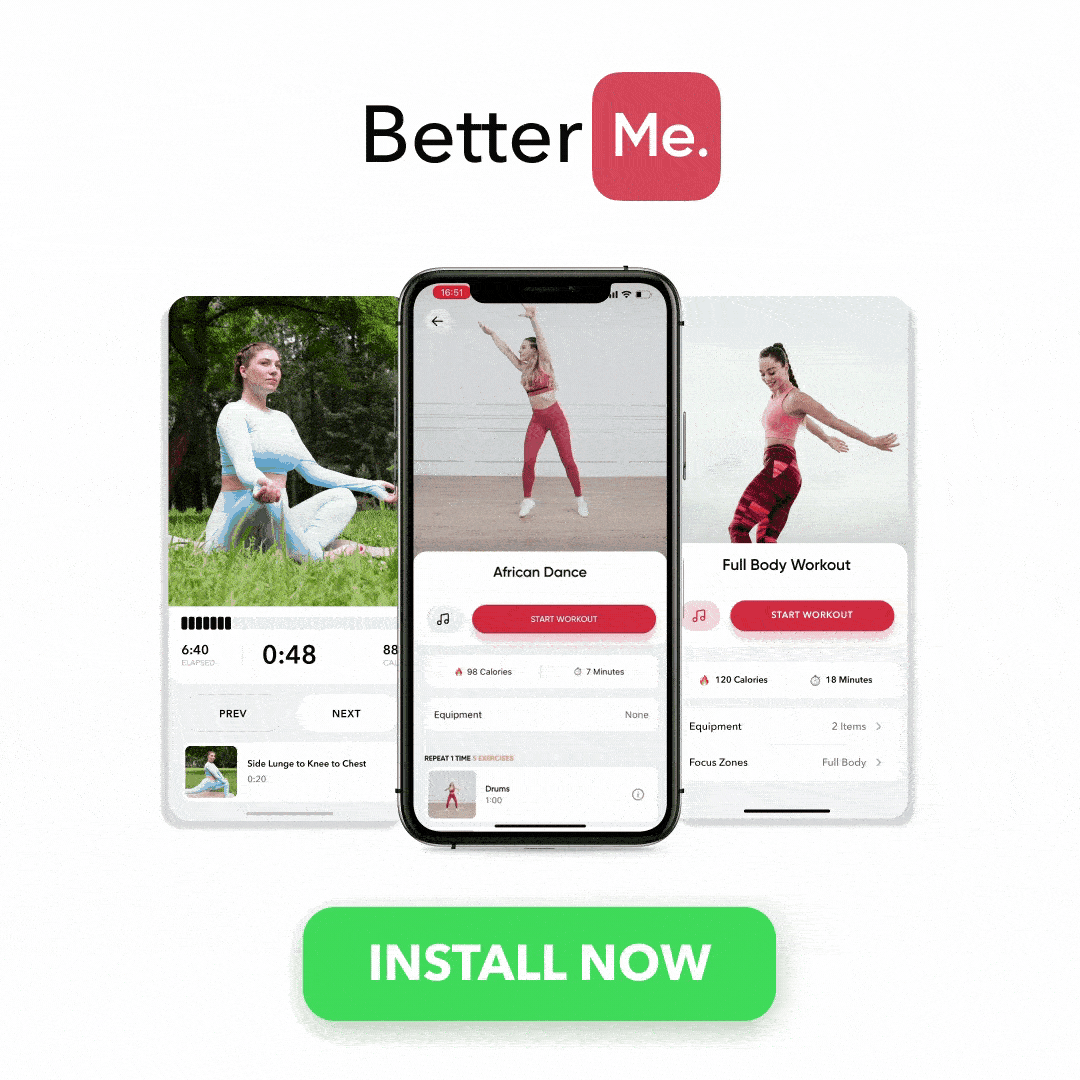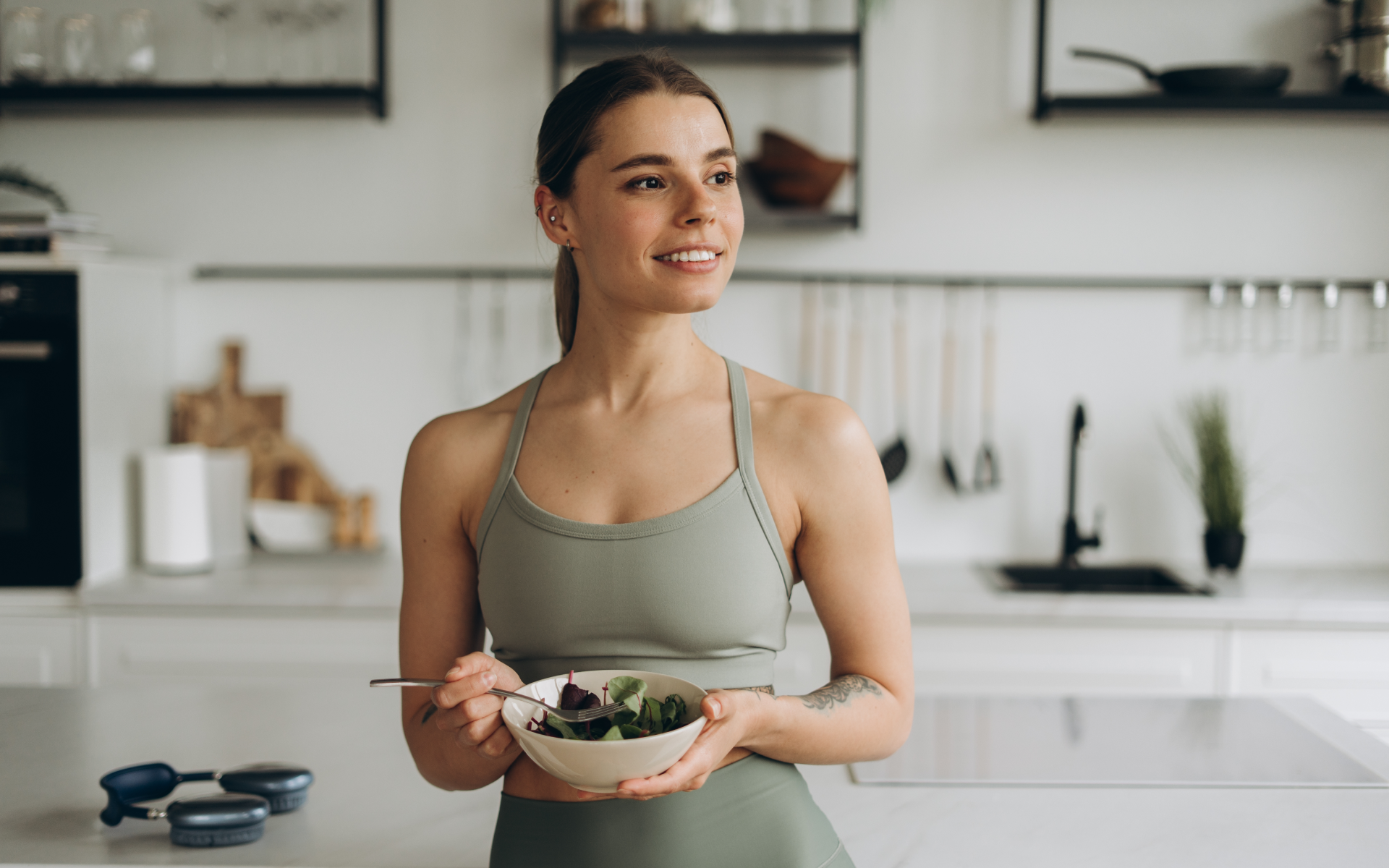Our busy everyday lives make it challenging to pay attention to the foods we consume. It is tougher to keep track of the amounts. So you go about eating large portions of food, and you cannot monitor your calorie intake. If you are trying to lose weight, your portion sizes are important. However, determining the correct portion sizes can be quite a task. Portion control helps you lose weight and monitor your healthy eating. We explore the portion control diet plan for female.
Get your personalized
meal plan!
What Is Portion Control?
Portion control refers to monitoring the measure of food you eat and changing it depending on its nutritional value and the objectives of your eating plan. Large portion sizes undermine your weight loss efforts.
Our bodies need food to obtain energy to perform life-supporting functions such as breathing, blood circulation, tissue repair, and growth. But much as it is essential to eat, the amounts we eat are as crucial. Controlling these portions is very challenging.
Individuals tend to eat all the food they serve on their plates. Thus a portion control diet plan female can help forestall overindulging (2). Especially if you are trying to lose weight, portion control should be a priority.
Many factors influence how much you eat, including hunger, taste, appetite, availability, cooking skills, time, stress, mood fluctuations, and guilt. Portion control is not about taking tiny portions of all foods. It is about healthy eating and knowing the correct serving per calorie count for various foods and drinks.
Often portion control and serving sizes are used interchangeably, but the two have different meanings. A serving size is the recommended amount of a certain food one should eat. On the other hand, portion size is the total amount of food you eat in one sitting.
What Are The Health Benefits Of Portion Control Diet?
Overeating it, in the long run, leads to being overweight or obese. Carrying too much weight or being obese is associated with increased risk for specific conditions such as heart disease, diabetes type II, osteoarthritis, and certain cancers, including endometrial, ovarian, breast, colorectal, pancreatic, esophageal, and kidney cancer (8).
The prevalence of obesity has tripled since the late 20th century, with about 1.9 billion adults over age 18 being obese and half a million of these being obese. Larger than appropriate portion sizes increase the risk for weight gain (11).
So, what are the portion control diet health benefits?
Improved Digestion
Eating large amounts of food puts a strain on your digestive system and triggers GI symptoms such as gas or bloating. Eating fatty, spicy foods and carbonated beverages such as soda produce gas. Eating too fast also causes gas and bloating as large amounts of food enter the stomach too fast (1).
Eating large portions of food may also cause indigestion and nausea. When you take a large meal and begin to reach the upper limit of your stomach’s capacity, you may experience indigestion or become nauseous. In extreme instances, nausea may trigger vomiting, which is the body’s way of relieving the pressure (9).
The digestive system functions properly when you do not overload it with food. Regulating your portions and eating slower will help make digestion smoother and keep bloating and nausea at bay.
Whether you’re a workout beast or just a beginner making your first foray into the world of fitness and dieting – BetterMe has a lot to offer to both newbies and experts! Install the app and experience the versatility first-hand!
Weight Loss
The amount of food you eat is directly connected to your weight. If you eat too many calories than your body needs, you gain weight. This is because the body stores the extra calories as fat and over time, this fat accumulation causes weight gain.
Eating smaller portions may help reduce your calorie intake. When you burn more calories than you consume, you lose weight. Select correct portions of well-balanced meals so that you supply your body with essential limits. Eat more foods rich in fiber and protein that help fill you up so that you do not crave junk food.
Improved Satiety
Eating the right portions while paying attention to your hunger cues helps improve satiety. Eat slowly and take time to actually enjoy the foods you eat to increase satiety and ultimately eat the right food portions.
Balanced Blood Glucose Levels
A proper healthy diet helps prevent spikes in your blood sugar levels. If you consume more calories than your body burns, it gets stored as fat. And the more weight you gain, the less sensitive your body becomes to insulin.
Insulin is the hormone that regulates blood sugar. Once the body becomes less sensitive to insulin or develops insulin resistance, it may cause a rise in blood glucose levels (10). So, eat the right portions of healthy foods like fruits and vegetables and limit consumption of processed and sugary foods.
Saving Money
The more you eat, the more you spend. When you eat the correct portion sizes, you will not need to buy too many groceries or restock your cupboards as often. With smaller portions, you consider both taste and nutrition, so you not only save money but get better value for it.
How To Calculate Portion Size?
The proper portion sizes fuel your body with the energy you need without overloading your body with extra calories. If you track your calorie intake as part of your weight loss program, you can use your calorie requirements to determine your portion sizes.
Portion size is calculated based on the total number of calories you consume in one day. You then prepare your menu by calculating what amounts of a specific food you can eat to stay within that limit. Therefore, portion sizes may vary so long as nutritional needs are met.
A calculator calorie may help you estimate how many calories you need daily. There are several calorie calculators online. Your calorie needs and metabolism are affected by different factors.
Factors that affect your calorie intake (and consequently your portion sizes) include:
- Height
- Genetics
- Hormonal imbalance. Some hormones such as ghrelin increase food intake while leptin reduces energy intake. Dysregulation in these hormones can cause one to eat more calories than they need (6).
- Age. Children, adolescents, and young people require more energy for growth and are generally more active.
- Sex. Men have a higher metabolism compared to females.
- Level of physical activity. The more physically active you are, the more calories you burn.
- Muscle mass. The more muscle you have, the higher your metabolism.
- Drugs. Certain drugs affect metabolism.
- Body size. The bigger your body size, the more calories you will require to keep your body going.
Read More: Resting Calories: Things About Your Metabolism That Nobody Taught You
Portion control may not be as straightforward, but it is possible to get the right portions with the proper guidelines. So after finding out what your daily calorie intake should be, here is how to calculate portion size:
Measure Food On A Scale
The surest way to know how much you eat is by measuring food on a scale. You might be used to eating straight out of the packet, and that way, you consume more than you should.
Measuring cups can help, but the best way to get accurate measures is to use a digital food scale. If you are trying to lose weight and record your calorie intake, measuring your portion sizes is crucial.
Use Portion Control Dishes
Using portion control dishes is another way you can get the right amount of food on your plate. It is a one-time investment that will see you stay on the course of your healthy eating. You may buy portion control dishes, glasses, and serving spoons.
You can also use smaller server ware. They make food look more substantial and help influence how much food you serve. Smaller dinnerware unconsciously affects how much food you eat (3). You can also buy dinnerware with individual compartments for carbs, proteins, and veggies.
Use The Plate Method
If measuring food or using portion control dishes seems somewhat cumbersome, you can use your plate as a portion size guide.
A rough guide for this method is:
- Vegetables: Should take up half your plate
- Protein-rich foods: For meat, poultry, eggs, fish, legumes, beans, tofu serve a quarter of your plate.
- Complex carbohydrates: Take a quarter of a plate of carbs, such as whole grains.
- High-fat foods: Including butter, cheese, and oil – take only half a tablespoon
Keep in mind that this is a generalized guide because people have different dietary needs—for instance, athletes or individuals who are more physically active need more food. Vegetables and fruits are low-calorie dense and contain lots of fiber, so they are filling. Eating more of these may help you avoid overeating energy-dense foods.
Use Your Hand To Measure Portion Sizes
Another simple method to determine your portion sizes is to use your hands. You don’t need any measuring cups or a food scale. Usually, your hands correspond to your body size, so bigger people have bigger hands and require more food.
Below is a guide for each meal:
- High-protein foods: For foods such as meat, legumes, fish, and poultry – a palm-sized serving for females and two palm-sized serving for males.
- High-fat foods: A thumb-sized serving for women and two for men – like butter, nuts, olive, and vegetable oils.
- High-carbohydrate foods: A cupped-hand portion for females and two for men.
- Vegetables and salads: A fist-sized serving for females and two fist-sized servings for males.
The Portion Size Chart
A portion size chart can further help simplify the process of selecting the right food portions. Here is a simple guide of portion sizes using everyday items:
| Food Group | Portion Size | Same Size As |
|---|---|---|
| Protein | Three ounces of fish, meat, or poultry | Deck of cards |
| Bread, pancakes, or waffles | 1 ounce or One slice | Compact disc |
| Pasta | ½ cup of rice or pasta | One baseball |
| Rice | Two portions of rice | A light bulb |
| Cheese | One ounce of cheese | The space occupied by four dice |
| Nuts | ¼ cup of nuts | A small golf ball |
| Nut butter | Two tablespoons | One golf ball |
| Vegetables and fruits | One cup | One baseball |
| Potatoes | One medium potato | One computer mouse |
| Muffin | One small muffin | One tennis ball |
| Desserts such as ice cream | ½ a cup | ½ a baseball |
Portion Sizes When Eating Out
When eating out at a restaurant or your favorite food place, it is very easy to overeat. Most restaurants serve mega sizes, and because of the tendency to eat everything served on the plate, you end up overeating. Restaurant portion sizes are about 2 to 5 times larger than standard servings (7).
This doesn’t mean that you stop going out to eat altogether. The good news is you can still enjoy a meal out with your friends occasionally and still keep your portion sizes under control. Here’s how:
- Eat only half of what you order. You can ask the waiter to pack the rest to go.
- Share the meal with someone else. You can split the main meal and even dessert.
- Drink a glass of water before your meal to avoid overeating.
- Listen to your body and eat until you are satisfied; you can carry the rest home and eat it later.
- Eat more vegetables. Always ask for a serving of greens on the side. Take a healthy appetizer such as soup or salad.
- Check the portion sizes of the meals they serve or inquire from the waiter. Go for something close to your fitting portion size. Sometimes a starter is enough for a whole meal.
- Remember the 50/25/25 rule for every meal (50% veggies and fruits, 25% protein, and 25% carbs) to keep you full and energized.
- Avoid buffets or all-you-can-eat offers as it is easy to overindulge.
- After eating at a restaurant, keep the rest of the meals for the day as light as possible to avoid exceeding your daily calorie limit.
- Ask that dressings and sauces be served on the side to control how much of you are consuming.
Dropping pounds by the dozens without putting yourself through the wringer is everyone’s weight loss pipe dream. But what if we told you that the BetterMe app can make that happen? Keep yourself in prime shape with our fat-blasting workouts, delicious budget-sparing recipes, and body-transforming challenges with our app!
How To Meal Prep For Weight Loss?
Meal planning is a helpful tool if you are trying to lose and maintain a healthy weight. When done correctly, it can help you create a calorie deficit while providing your body with the nutrients it needs for proper functioning. Planning your measles also enables you to save time and stay consistent.
Weight loss meal plans are designed to help you consume fewer calories than you burn. When meal planning for weight loss, make sure you include more nutrient-dense foods and less calorie-dense and processed foods.
Here’s how to come up with a weight loss diet plan that works:
Choose A Meal Planning Method That Complements Your Routine
There are several ways to plan a meal, so ensure you pick the method that fits in your daily routine. You can choose to prepare all your meals over the weekend, pack them and refrigerate them. This way, all you need to do is warm them before eating.
Another option would be to prepare your meals daily. You can choose to follow recipes or improvise when preparing your meals. Batch shopping is a great approach that allows you to save time and helps you stock nutrient-dense foods.
Consider Using An App
There are several meal planning apps available online that can be very helpful. Some applications have meal plan templates that you can modify based on your food allergies and preferences. With apps, you can also keep track of your recipes and save all your food data in one place.
Additionally, apps help put together a customized grocery list based on your recipes. With most apps, you can set reminders so that you restock supplies you have run out of. You thus get to save time, effort, and food wastage. Check out the BetterMe app while you’re at it!
Ensure Variety
A healthy balanced meal consists of all the nutrients – proteins, carbohydrates, fats, vitamins, and minerals. A proper weight loss diet should include whole foods, including whole grains, meats, fruits, and vegetables. This ensures that you supply your body with all the nutrients it needs.
A good weight loss meal plan should:
- Include protein and fiber-rich foods: Protein and high fiber foods help fill you up, reduce cravings and help you feel satisfied on smaller food portions (12). They thus remove the need for frequent snacking on junk foods.
- Include a variety of veggies and fruits: Both vegetables and fruits are low calorie-dense, and thus you can eat them in large quantities without consuming excess calories. They are also rich in vitamins and minerals, thus helping you stay healthy. Additionally, fruits and veggies contain lots of fiber and water that help fill you up.
- Limit processed foods: When trying to lose weight, you should reduce your intake of ultra-processed foods rich in unhealthy fats and added sugar. These foods are high in calories with little to no nutritional value.
- Include lots of water: Staying hydrated is essential. Water is a natural appetite suppressant (5). It also helps increase your resting energy expenditure, helping you burn more calories (4).
Include Snacks
Even when you are trying to lose weight, an occasional snack does no harm. The trick is to eat snacks in small portions and opt for healthy snacks and not a bag of chips, a bar of chocolate, or a packet of candy. If you allow yourself to get overly hungry in between meals may cause you to overindulge during your next meal, jeopardizing your weight loss efforts.
Snacks help reduce craving, keep you full in between meals and reduce your total calorie intake. A combination of snacks rich in fiber and protein is ideal. You can try nuts, veggies, and hummus or yogurt dips, or roasted chickpeas. Be on the lookout to keep snake consumption to a minimum.
7-Day Portion Control Diet Meal Plan
The sample below helps provide menu ideas for a weight loss diet. You can adjust the portions to suit your individual nutritional needs. This meal plan includes various snacks, but they are optional.
Sunday
- Breakfast: Overnight oats, chia seeds, milk, and fresh mixed berries
- Lunch: Egg muffins with balsamic basil tomato salad and avocado
- Snack: Strawberry-banana smoothie
- Supper: Rice, roasted broccoli, and oven-baked chicken breasts
Monday
- Breakfast: Greek yogurt, pancakes with some honey, and peaches
- Lunch: Tuna wraps, boiled spinach, and tortillas
- Snack: A handful of mixed nuts
- Supper: Garlic mushrooms, a handful of kales, and marinated chicken
Tuesday
- Breakfast: Vegetable omelet made with eggs, onions, pepper, spinach and tomatoes, and green tea
- Lunch: Brown rice, beef with spinach, and kales
- Snack: Avocado and mango salad
- Supper: Baked beans with ground beef, pasta, broccoli, and an orange
Wednesday
- Breakfast: Breakfast smoothie made with oats, banana, greek yogurt, strawberries, mango, and milk
- Lunch: Teriyaki chicken, boiled potatoes, carrots, and cauliflower, and raspberries
- Snack: Carrot sticks and yogurt dip
- Supper: Grilled tempeh, potatoes, and sauteed broccoli and carrots
Thursday
- Breakfast: Protein egg and tomato on toast and low-fat milk
- Lunch: Homemade spring rolls with peanut sauce and a side of veggies
- Snack: Mango carrot smoothie
- Supper: Homemade cauliflower-crust pizza topped with pesto, a handful of collard greens, and marinated tempeh
Friday
- Breakfast: Greek yogurt topped with strawberries and chopped almonds
- Lunch: Tuna salad with grilled vegetables and apple slices
- Snack: Apple slices with almond butter
- Supper: Paprika chicken with garlic mashed cauliflower and spaghetti
Saturday
- Breakfast: Pumpkin pancakes with plain yogurt strawberries and chopped walnuts
- Lunch: Whole-grain pita chips, kale salad topped with a poached egg, tomatoes, and a fruit-salad dressing
- Snack: Watermelon slices
- Supper: Chicken meatballs with spaghetti squash and mixed baby greens.
Conclusion
Unwanted weight gain often begins with eating large portions. To avoid weight gain and successfully achieve a healthy weight, you should eat the right food portions. Luckily, there are many steps you can take to eat the right amount of food.
You need to remember portion control is a lifestyle. Portion control is not as abstract as it seems, as small steps like using small plates or sharing your food at the restaurant help you control how much food you eat. If you have any questions about portion control, consult your dietitian or nutritionist.
If you have decided to lose weight as fast as possible, make sure you dive into both dieting and regular workout.
DISCLAIMER:
This article is intended for general informational purposes only and does not address individual circumstances. It is not a substitute for professional advice or help and should not be relied on to make decisions of any kind. Any action you take upon the information presented in this article is strictly at your own risk and responsibility!
SOURCES:
- Associations among binge eating behavior patterns and gastrointestinal symptoms: a population-based study (2009, ncbi.nlm.nih.gov)
- Bottomless bowls: why visual cues of portion size may influence intake (2005, pubmed.ncbi.nlm.nih.gov)
- Visual cues of portion size may influence intake (2005, pubmed.ncbi.nlm.nih.gov)
- Effect of ‘Water Induced Thermogenesis’ on Body Weight, Body Mass Index and Body Composition of Overweight Subjects (2013, ncbi.nlm.nih.gov)
- Effect of excessive water intake on body weight, body mass index, body fat, and appetite of overweight female participants (2014, ncbi.nlm.nih.gov)
- Elevated ghrelin predicts food intake during experimental sleep restriction (2016, ncbi.nlm.nih.gov)
- Expanding portion sizes in the US marketplace: implications for nutrition counseling (2003, pubmed.ncbi.nlm.nih.gov)
- Health impacts of Obesity (2015, ncbi.nlm.nih.gov)
- Nausea: a review of pathophysiology and therapeutics (2016, ncbi.nlm.nih.gov)
- Overeating impairs brain insulin function, a mechanism that can lead to diabetes and obesity (2012, sciencedaily.com)
- Portion Size and Obesity (2014, ncbi.nlm.nih.gov)
- Review Optimising foods for satiety (2015, sciencedirect.com)



















